Happy Chinese New Year!!!
Another week past, and we are steadily approaching quarters. The focus of the design team this week was to drill down the details of our story and to start working on specifics of the prototype for our first playtest.
Design
We began by classifying the different types of trauma to be addressed and also the type of questions asked in existing trauma-related questionnaires. While some questions were personal and introspective, a lot of them were related to external stimuli. These external factors could induce feelings of fear, violence, loneliness and trust issues. Having the questions classified gave us a better idea of the themes that we would have to deal with in our story and experience.
After our client meeting this week, we received the actual questions from the client. Now, we have a clear problem statement and there is no ambiguity on the type of questions that will be asked. This will help our design process immensely and our story can be crafted in more detail.
We also summarized 20 brainstorming ideas for our story and wrote down their details. Apart from their description we also noted why we think each would be a good instrument to ask our questions. Some common themes emerged from these ideas and we short-listed 3 – 4 ideas to proceed with. The final experience is likely to be a combination of ideas from each of these narratives.
Prototyping
This week we worked on implementing player inputs and frameworks for designers to give input.
For player inputs, we started with the interaction of a single tap. The designers can add an interaction by (1) giving the name of the object the player needs to tap and (2) giving which animation/sound should be triggered with it or if some more complicated function should be called.
We also create a very simple, kind of silly-looking face for us to test on. Here are a few screenshots indicating the tap function:
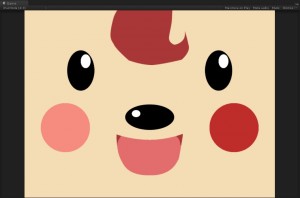
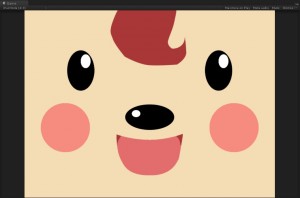
On the left, his cheek becomes red after you tap on it. On the right, his hair will move a little after being tapped.
After tapping, we also started working on a swipe interaction for players to swipe off things from the screen/do interactions with the character. The feature is almost done with a bug to fix and making it more generalized.
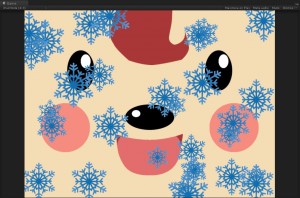
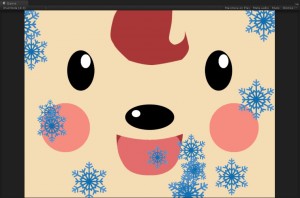
As you can see in the pictures, the player can use his finger to swipe off the snowflakes off from his face.
On the framework side, we use CSV file as an input, to store the input. See below:

As you can see, designers can input a series of actions that the character can do and respond with animation and sound specified, and also what actions players need to go to the next step.
From this chart, we import it into the Unity engine and start the game sequence. With this tool we can easily change the plot and test.
Playtest
We have gathered some characters as samples for children to choose from when we playtest next week. We are looking forward to hearing their preferences for art style and character!
Apart from that, we planned to prepare a simple interaction to see if children would enjoy interacting with our character. Therefore, we designed a script for the brief initial introduction of a character. The script has two interactions: poke and swipe. The character is introduced through having children poke the box to free the character and then swiping the character’s face.
We also worked on detailing the structure of the playtest. We identified certain categories like character, story, audio and the prototype that will be shown to the children. We gave some thought to the order of the tests and the questions we need to ask them so that our playtest can be as efficient and informative as possible. We designed a feedback form so that all feedback can be noted down properly.
Sound
As the clients mentioned, we figured out that voice and general sound does have a great impact on the players’ experience. Therefore, we began to research what kinds of voice should be used for the application.
We searched for different favorite characters by children. There were many examples such as Disney characters and other cartoon characters, but since they are combinations of visuals and characteristics within a certain story, characters are much more than voices. So we took another approach and focused solely on different “kinds” of voices and divided the categories into high, low, soft and husky. Then we found iconic examples according to the different categories. After that, we picked 4 candidates (ETC students) to ask to record for us. All four of them recorded the whole script but we will be selecting short pieces so that children can briefly listen to each different candidate.
Production
Our poster and half sheet are finalized!
We made a few changes to the design based on feedback Monday, including a font change and some alterations to the rainbow and overall style. We played with another design, but opted to keep this one because we feel that the edelweiss shielding a child from rain as they head toward brighter skies is a strong image that really symbolizes the team’s purpose.
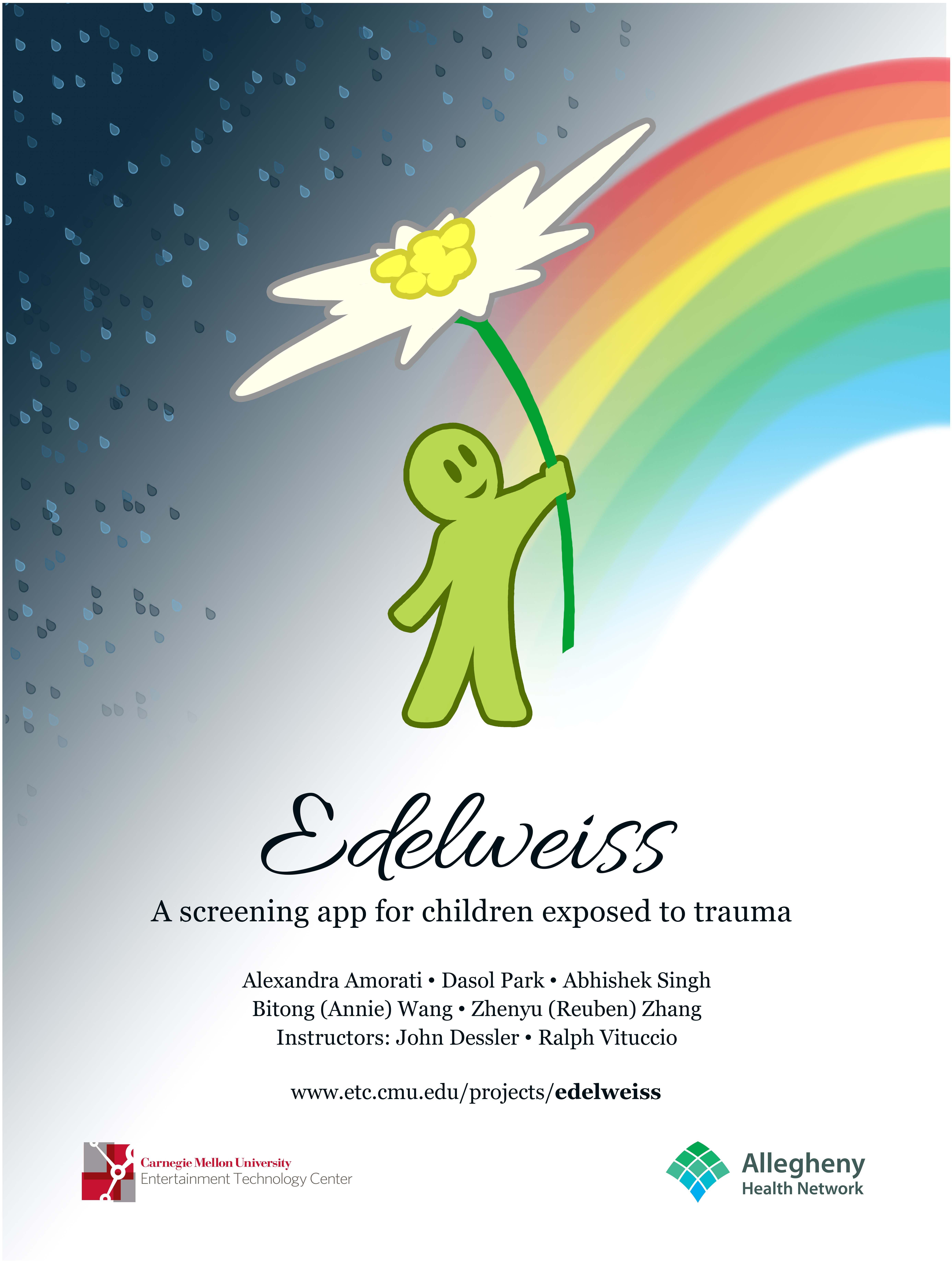
We spoke to our clinicians again this week to check in with our designs. Based on their feedback, it seems we will need to put more focus on the ideas of adventures and rewarding kids as they complete the survey.
We feel prepared for quarters. There are a few more long-term scheduling things we should lay out, such as planning more playtests since they are essential to our project, but we are feeling confident about the work we have done so far and where we’re headed.
